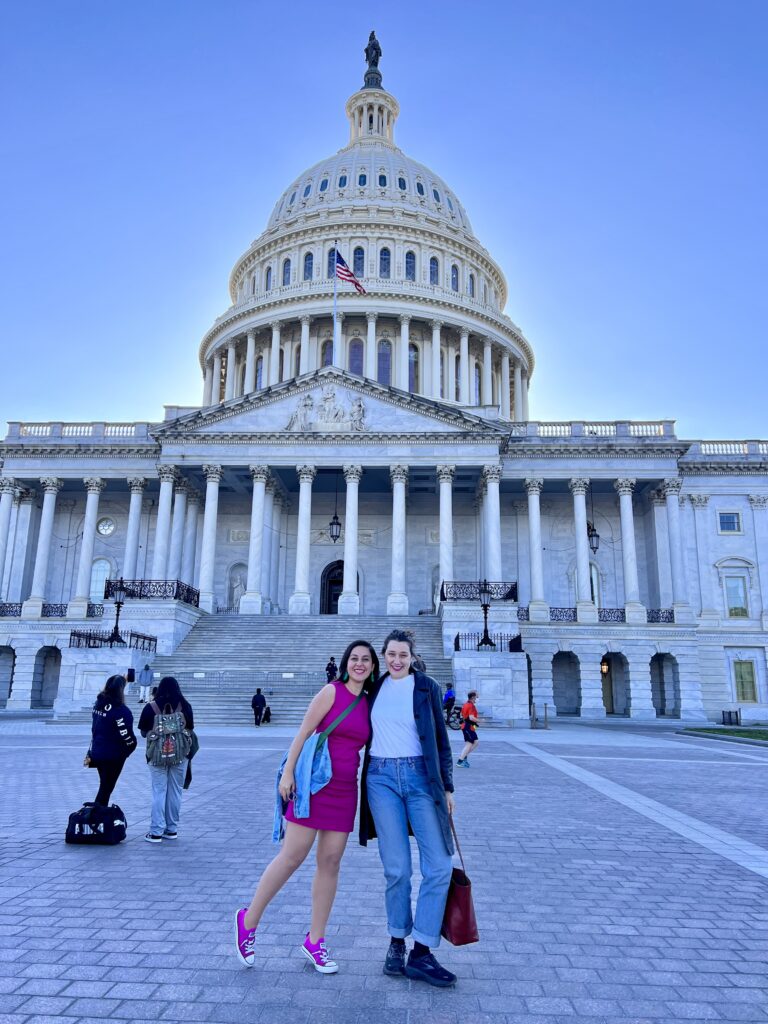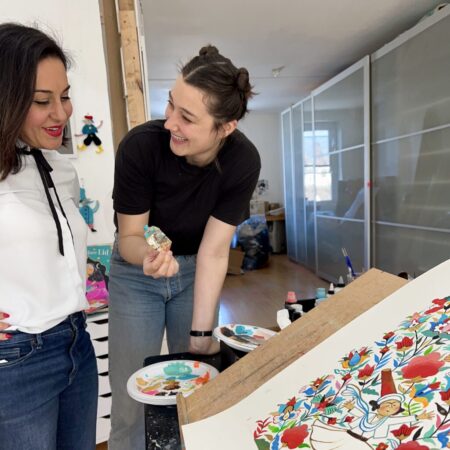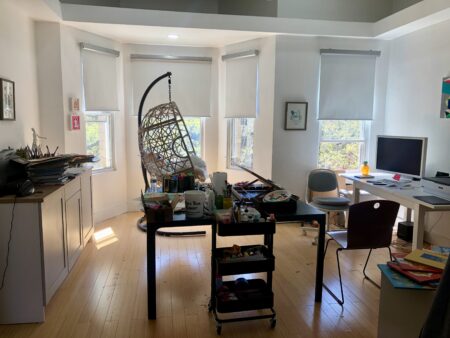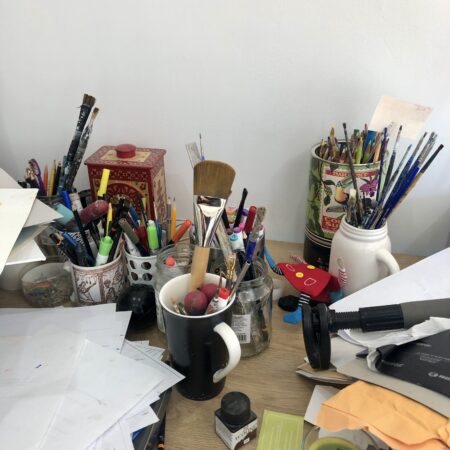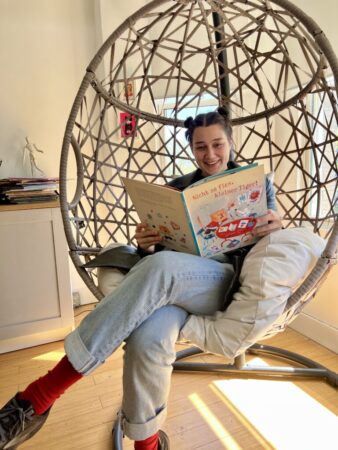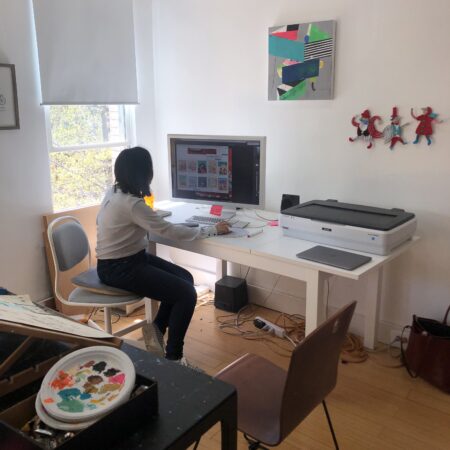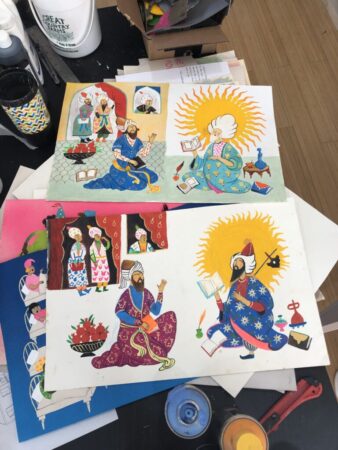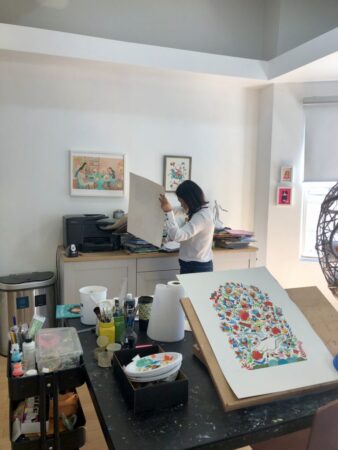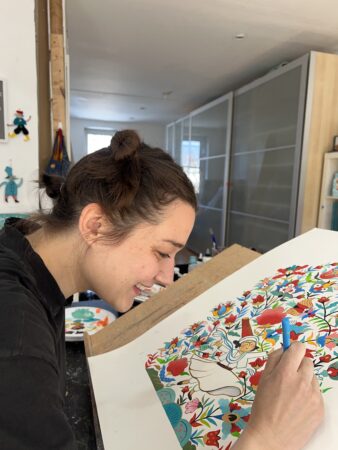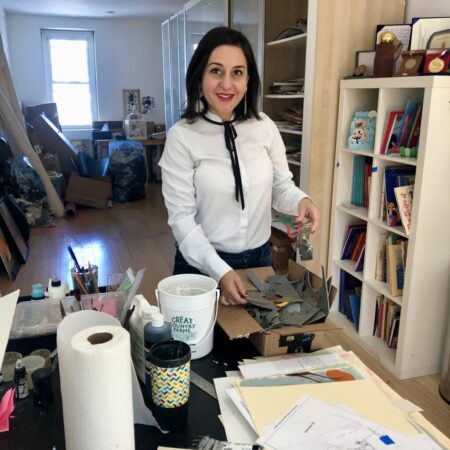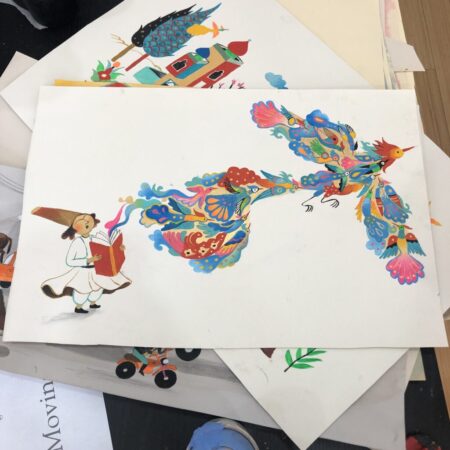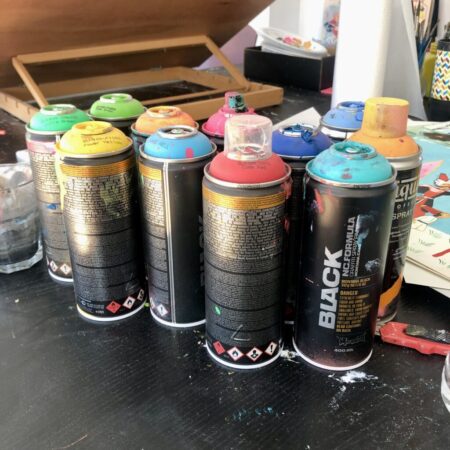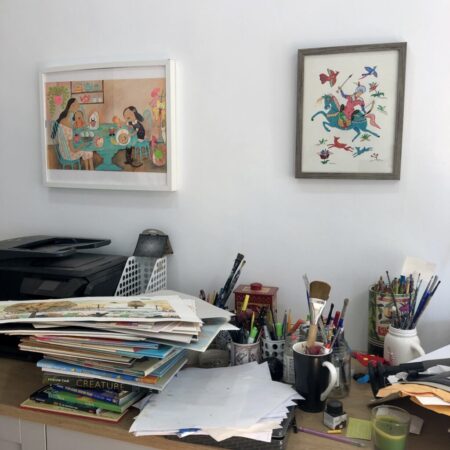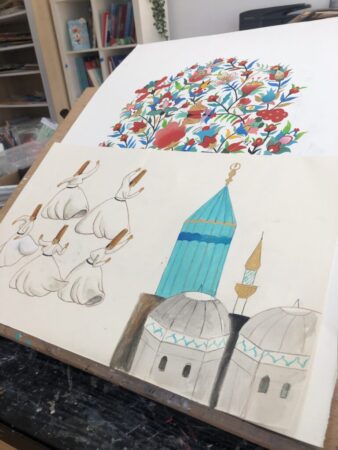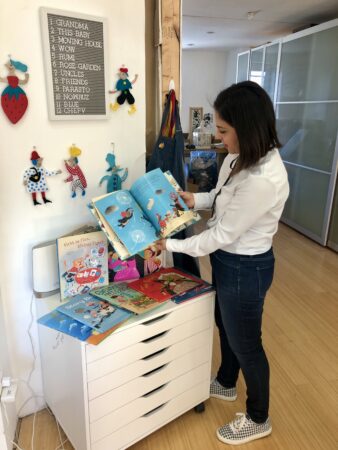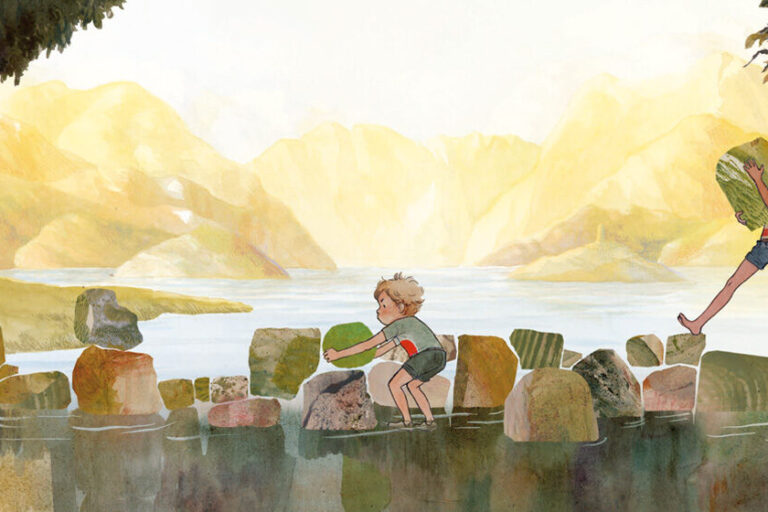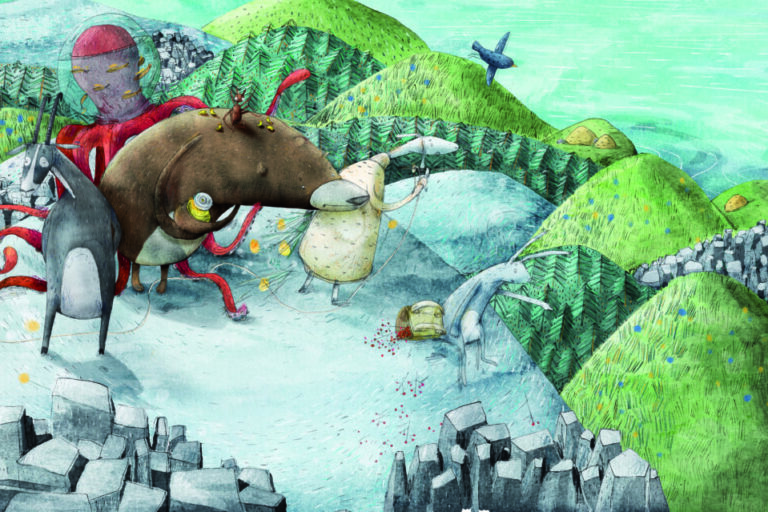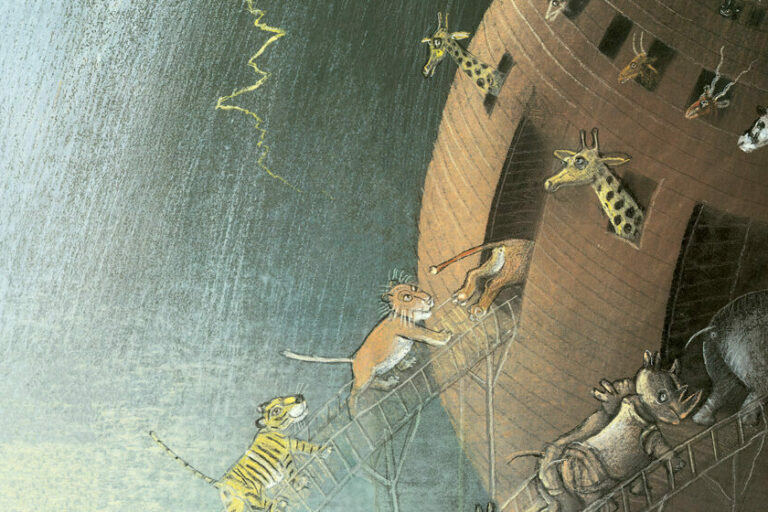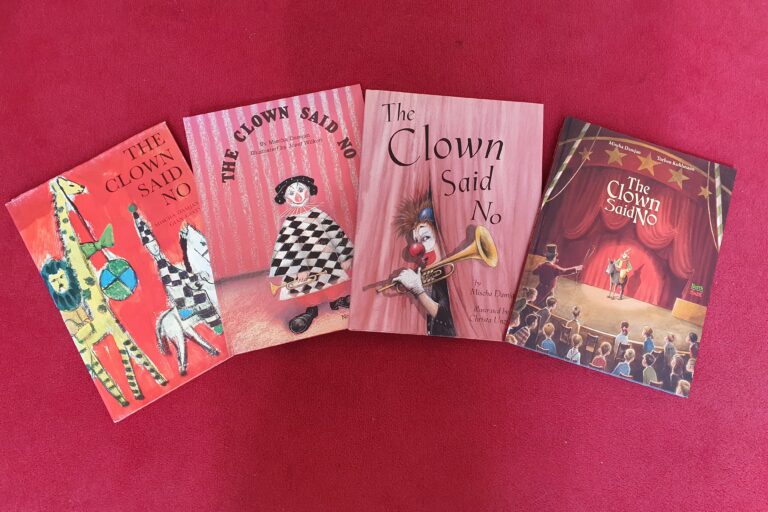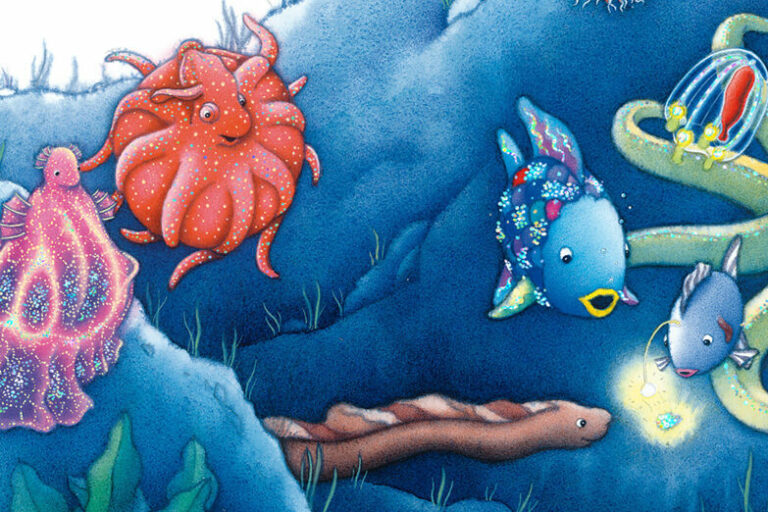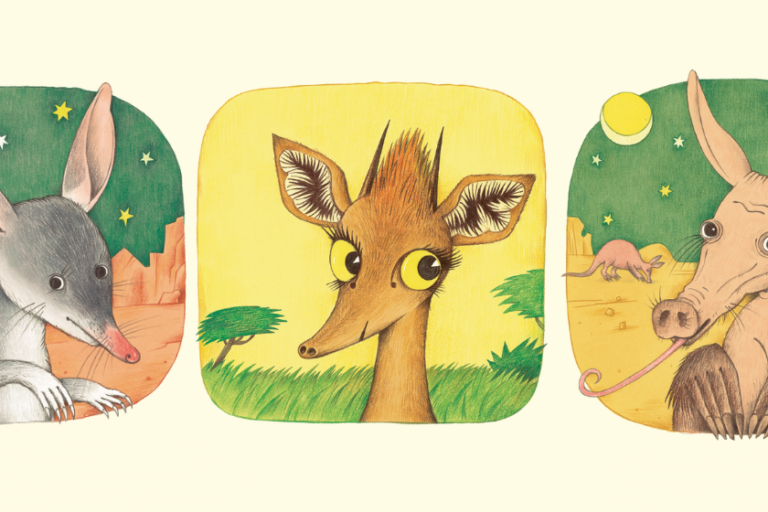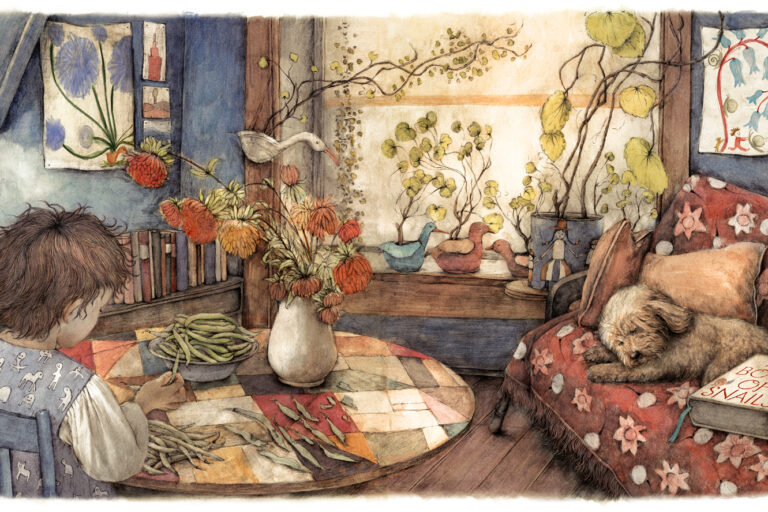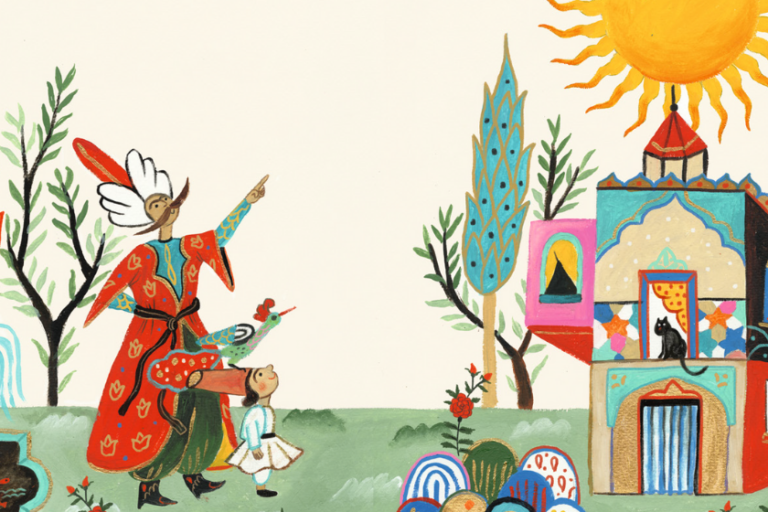Traveling Pictures
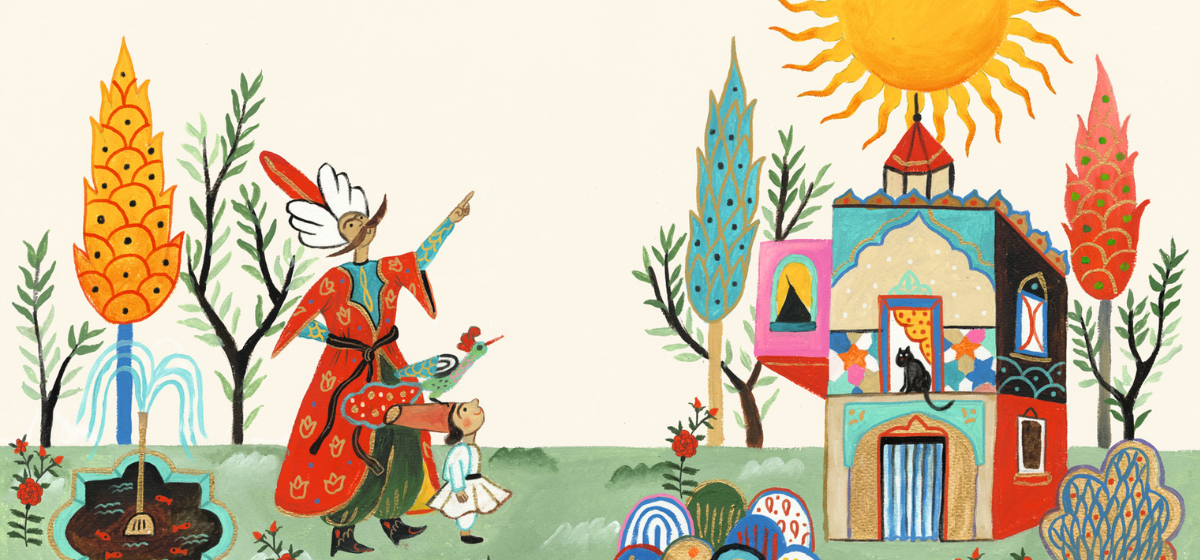
Interview with author/illustrator Rashin Kheiriyeh
Elena Rittinghausen, visiting editor from NordSüd Verlag, met with Iranian-American artist Rashin Kheiriyeh in Washington D.C., where Rashin lives and works. NordSüd publisher Herwig Bitsche first met Rashin in 2011, and he quickly contracted three books from Rashin. These titles–Two Parrots, The Seven Voyages of Sinbad The Sailor, and There Was an Old Lady Who Swallowed a Fly–became her first books published in the US. Read the interview below to find out how Rashin started in illustration and how her work is impacted by the current events in her home country of Iran.
Rashin, how did you get into illustration?
I’ve always been interested in illustration, but actually, I wanted to be a painter. At first, I majored in graphic design. There was no real illustration major at my college. By the way, it was the first art college in Iran to admit women. Later, a course on illustration sparked my interest in visual storytelling. It came easily to me, and fellow students and faculty spurred me on.
What did your beginnings look like?
In the beginning, my illustrations were inspired by children’s poems. I needed a portfolio, after all. I sent it to a children’s magazine in Tehran. The art director was impressed. He commissioned me to illustrate a short story about a crow. I then worked for the magazine for three years.
At some point, I submitted my work to the Tehran Illustration Biannual and won the first prize. Later, I heard from one of the jury members that my choice was controversial. Some thought I was too young. But from that moment on, publishers were lining up [She laughs].
How did you come to live in the U.S. now?
In 2007, I was part of a group of Iranian artists invited by the State Department to Washington D.C. for an exhibition. It was an exchange program and we visited different colleges, including the New York School of Visual Arts. A teacher introduced me to an editor from the New York Times. My first feature was on the opinion pages.
Then in 2011, I met Herwig Bitsche, the publisher of NordSüd. He offered me contracts on three books at once. This allowed me to stay in the U.S. and work here. I was able to participate in events, do readings in schools, and my books were reviewed in the media. That opened a lot of doors for me.
How does it feel to be perceived as a voice of the protests in Iran?
My thoughts are constantly on Iran. When I write stories myself, I take all my inspiration from there. I also couldn’t live without Iranian music and food. I have never cut my ties there. I follow the news very closely. What’s happening right now worries me a lot. On the one hand, I am incredibly happy that people in Iran are waking up. At the same time, they have little to oppose the authorities with. My parents still live there. That’s why I think about their safety in everything I do. I, too, will not travel to Iran again until the situation improves. At least I was able to design banners for the campaign of an organization that champions women’s rights in Iran. I wish for democracy and freedom to return to Iran. The hardliners won’t be able to keep up the pressure forever.
How was the work on Rumi– Poet of Joy and Love for you?
Rumi and his texts are very familiar to me. They are very contemporary in many ways. Rumi was an Islamic scholar who, after meeting Shams and Sufism, threw all certainties overboard. He opened his eyes and discovered that we can be close to God in an infinite number of ways: through dance, nature, or friendships. Rumi realized that strength comes through unity, not division. This can be so easily applied to Iran today; we need tolerance and respect for the choices of individuals there. Fortunately, the memory of a liberal Iran is still very much alive in people’s minds.
What is your working process?
I start with pencil drawings. I transfer those to paper in the right format. And then I just start – if I don’t like the finished picture, I start over. My favorite way to work is with a brush, applying one color at a time. It’s almost like meditating. But I like to try new techniques, like linoleum printing or spray paint. I’m always working on different books at the same time, so it never gets boring.
Pictures travel so well.
Rashin
What kind of stories do you want to tell in the future?
I want to tell about Iran and share Persian stories with children around the world. I also want children with Iranian roots to be able to find themselves in my books and tell about their cultural heritage, for example, at school. That’s what I love about picture books: no matter where you come from or what language you speak, you can communicate with everyone in this global community. Pictures travel so well. There’s very little difference between countries in the center [of global attention] and those on the periphery.
